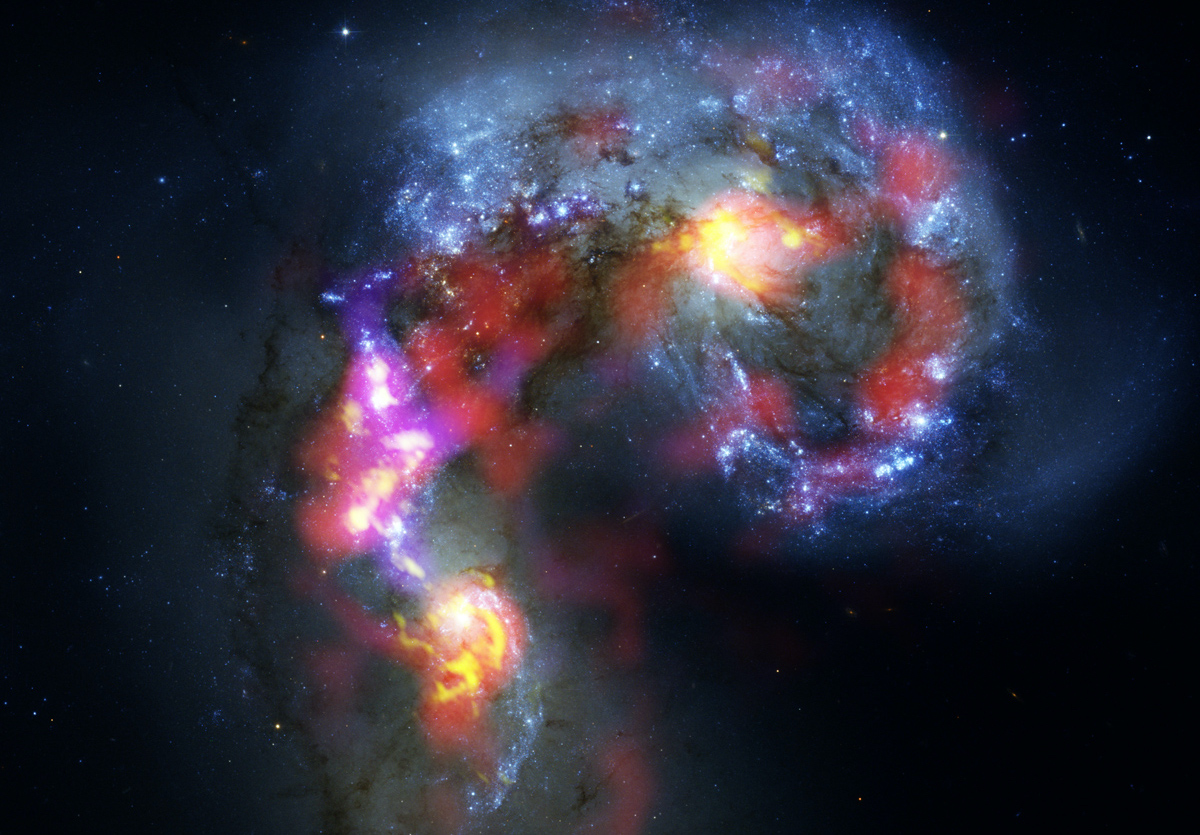ALMA Inauguration Heralds New Era of Discovery
Today, in a remote part of the Chilean Andes, the Atacama Large Millimeter/submillimeter Array (ALMA), was inaugurated at an official ceremony. This event marks the completion of all the major systems of the giant telescope and the formal transition from a construction project to a fully fledged observatory. ALMA is a partnership between Europe, North America and East Asia in cooperation with the Republic of Chile.
ALMA’s three international partners today welcomed more than 500 people to the ALMA Observatory in the Chilean Atacama Desert to celebrate the success of the project. The guest of honour was the President of Chile, Sebastián Piñera.
The President of Chile, Sebastián Piñera, said: "One of our many natural resources is Chile’s spectacular night sky. I believe that science has been a vital contributor to the development of Chile in recent years. I am very proud of our international collaborations in astronomy, of which ALMA is the latest, and biggest outcome."
At the ceremony, which was broadcast live on the internet, representatives of ALMA’s international partners were also present: ESO’s Director General, Tim de Zeeuw, the Director of the USA’s National Science Foundation Subra Suresh, and the Senior Vice Minister of Japan’s Ministry of Education, Culture, Sports, Science and Technology Teru Fukui, along with the Director of ALMA Thijs de Graauw. ALMA executives, personnel and representatives of the neighbouring communities also attended the event.
Thijs de Graauw, expressed his expectations for ALMA. "Thanks to the efforts and countless hours of work by scientists and technicians in the ALMA community around the world, ALMA has already shown that it’s the most advanced millimeter/submillimeter telescope in existence, dwarfing anything else we had before. We are eager for astronomers to exploit the full power of this amazing tool."
"This is an example of the great achievements that become possible when institutions and nations pool their efforts" added Tim de Zeeuw. "Applying this on a global scale by partnering up in such a great project, we are giving the astronomers the possibility of doing the unique research that is only possible with ALMA."
Tomorrow, a selected group of guests will have the opportunity to visit the telescope at the Array Operations Site, located 5000 meters above sea level. The assembly of ALMA’s antennas was recently completed, with the last batch of seven out of the final total of 66 antennas currently being tested before entering into service. The telescope has already provided unprecedented views of the cosmos with only a portion of its full array.
Able to observe the Universe by detecting light that is invisible to the human eye, ALMA will show us never-before-seen details about the birth of stars, infant galaxies in the early Universe, and planets coalescing around distant suns. It also will discover and measure the distribution of molecules — many essential for life — that form in the space between the stars.
The observatory was conceived as three separate projects in Europe, USA and Japan in the 1980s, and merged to one in the 1990s. Construction started in 2003. The total construction cost of ALMA is approximately US$ 1.4 billion.
The antennas of the ALMA array, fifty-four 12-meter and twelve smaller 7-meter dish antennas, work together as a single telescope. Each antenna collects radiation coming from space and focuses it onto a receiver. The signals from the antennas are then brought together and processed by a specialised supercomputer: the ALMA Correlator. The 66 ALMA antennas can be arranged in different configurations, where the maximum distance between antennas can vary from 150 meters to 16 kilometers.
On the occasion of the inauguration the ALMA partners, ESO, the National Radio Astronomy Observatory and the National Astronomical Observatory of Japan are releasing a 16-minute movie called ALMA — In Search of Our Cosmic Origins, a photo book, a booklet about ethno-astronomy in the area and two brochures about the project and the contributions of the executives. All materials are available for download in electronic form at the links below.
More information
The Atacama Large Millimeter/submillimeter Array (ALMA), an international astronomy facility, is a partnership of the European Organisation for Astronomical Research in the Southern Hemisphere (ESO), the U.S. National Science Foundation (NSF) and the National Institutes of Natural Sciences (NINS) of Japan in cooperation with the Republic of Chile. ALMA is funded by ESO on behalf of its Member States, by NSF in cooperation with the National Research Council of Canada (NRC) and the Ministry of Science and Technology (MOST) in Taiwan and by NINS in cooperation with the Academia Sinica (AS) in Taiwan and the Korea Astronomy and Space Science Institute (KASI).
ALMA construction and operations are led by ESO on behalf of its Member States; by the National Radio Astronomy Observatory (NRAO), managed by Associated Universities, Inc. (AUI), on behalf of North America; and by the National Astronomical Observatory of Japan (NAOJ) on behalf of East Asia. The Joint ALMA Observatory (JAO) provides the unified leadership and management of the construction, commissioning and operation of ALMA.
Links:
- The movie ALMA — In Search of our Cosmic Origins
- The ALMA Photo Book In Search of our Cosmic Origins – The Construction of the Atacama Large Millimeter/submillimeter Array
- Booklet about ethno-astronomy in the area of ALMA
- ALMA Partnership brochure
- The Universe of ALMA
- Photos of ALMA
Contacts
-
Nicolás Lira
Education and Public Outreach CoordinatorJoint ALMA Observatory, Santiago - ChilePhone: +56 2 2467 6519Cel: +56 9 9445 7726Email: [email protected] -
Richard Hook
Public Information Officer, ESOGarching bei München, GermanyPhone: +49 89 3200 6655Cel: +49 151 1537 3591Email: [email protected] -
Masaaki Hiramatsu
Education and Public Outreach Officer, NAOJ Chile -
Charles E. Blue
Public Information OfficerNational Radio Astronomy Observatory Charlottesville, Virginia - USAPhone: +1 434 296 0314Cel: +1 202 236 6324Email: [email protected]
